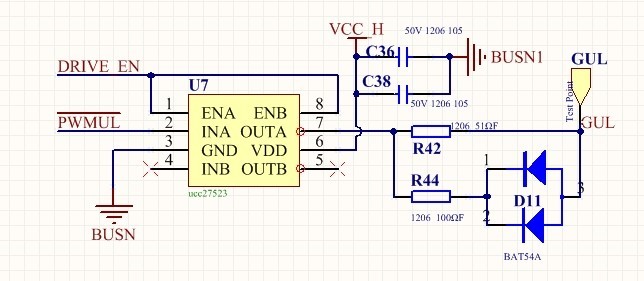Hi all,
one of my customers has one problem about UCC27523,and it follows as below:
UCC27523 can not output high level, and the output voltage is lower than -2V. whether this can cause damage to the chip ? and what is the main reason which can cause no high level output disability?
Thanks a lot!


